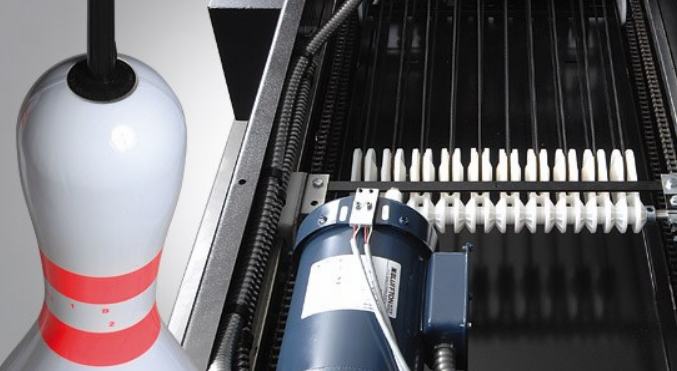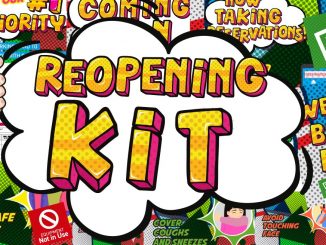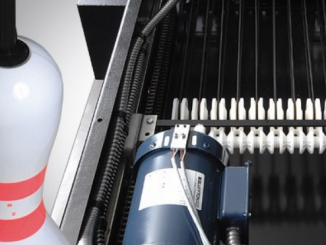
 You would think in the future that everything will be automated, a machine doing what humans once did. It has been true in bowling up until now as pinboys who set the pins by hand were replaced by automated machines. These machines have advanced over the decades to the slick space age looking but expensive pinspotters of today.
You would think in the future that everything will be automated, a machine doing what humans once did. It has been true in bowling up until now as pinboys who set the pins by hand were replaced by automated machines. These machines have advanced over the decades to the slick space age looking but expensive pinspotters of today.
There is another type of pinsetter though called a string pinsetter that was invented in 1963. In a string pinsetter there is a string attached to the top of the pin. The string is said to have no interference with the pins when the ball hits them. At the end of each throw, the machine pulls the pins back into a rack and resets the pins that weren’t knocked down. You might have seen a string pinsetter if you’ve played mini-bowling.
String pinsetters are a lot less expensive than fully automated machines.. One of the many advantages of string pinsetters is that they have fewer moving parts and require minimal maintenance. This compares with fully mechanical and electrical pinsetters that are very elaborate machines with lots of moving parts, more than 1,500.
 Many bowling alleys require a full-time mechanic to keep automated pinspotters in good operating order and to fix pin jams in the machines during bowling. The maintenance and labor cost for these pinspotters is much higher than for string pinsetters. String machines, even for ten-pin bowling, are very common in other countries including Canada, Germany, Luxembourg, Russia, China, Romania, Hungary, India, Brazil, and Mexico.
Many bowling alleys require a full-time mechanic to keep automated pinspotters in good operating order and to fix pin jams in the machines during bowling. The maintenance and labor cost for these pinspotters is much higher than for string pinsetters. String machines, even for ten-pin bowling, are very common in other countries including Canada, Germany, Luxembourg, Russia, China, Romania, Hungary, India, Brazil, and Mexico.
String machines were not the only idea tried though in bowling. The Mendes company produced a magnetic pinsetter known as the MM-2001. It featured a flat magnetic pin table and magnets on the head of each pin. It had a pit similar to the AMF and an elevator similar to the GSX. Pin loading involves the combination of a carousel and magazine. The company claimed this technology reduces stops in play due to table jams on out-of-range pins. Mendes was bought out by Qubica, which sold the machine as the MAG3 until its partnership with AMF.

Anyone remember Bowlingo?
If I am honest, I like most if not all bowlers I know have frowned on string bowling since they started to appear in the late 80’s and 90’s in the UK, There were not many of them for sure but were considered “Not real bowling” even before anyone had played on them. Last we will see of them, could easily be thought. Fast forward 30 or so years and we find String bowling making a comeback.
Both QubicaAMF and Brunswick produce string machines at full size and mini bowling size, these machines have improved, become more simple yet still full of technology. Truth is, bowling proprietors are now attracted by the much lower costs in running these machines. Big chains are looking at replacing traditional machines with string machines. This is a fact and not some kind of future thinking or dreaming.
 So what is the future for bowling?
So what is the future for bowling?
Well one such future is one also identified by Australian international and Storm staffer George Frilingos. He can see what could happen and took it upon himself to investigate further. Rather than explain what George did, click on the link below and we can continue with the future thinking.
https://www.facebook.com/georgio.frilingos/videos/10154645575544798/
Telling now though is USBC requesting a copy of George’s video as you can hear in a follow up interview the Aussie has done with a US based bowling radio show. Have a listen as George explains string machines better than I and what the future may hold.
https://www.podbean.com/media/share/pb-df7gf-641578#.WBa-Ke5UhUQ.facebook
 What happens if large chains go String?
What happens if large chains go String?
This all threw up an interesting thing, where will we all bowl if proprietors convert to string machines? Is there even a sanction for them? A clue is above in George’s research.
Simple answer is NO.
You need a longer answer though of course so we contacted World Bowling’s Kevin Dornberger who told us.
“Even though our statutes are not specific, World Bowling follows USBC technical rules. No application for string machine approval has ever been received by the USBC, so at this point my opinion is that they would not be approved for World Bowling competition.”
So if this does not change and a connection made to string machines, it technically can become a sport in it’s own right. A new World body for it, in reality a new code of bowling? Bowlers will find a much smaller pool of places to play at all.
Now it might seem mad to think bowlers will just convert and go string bowling, That ain’t gonna happen without a lot of tears and noise but at the end of the day, we can only bowl where there is bowling. If that bowling is string, What are you going to do?



